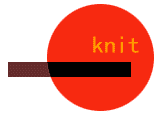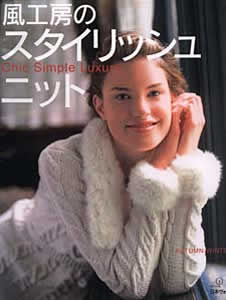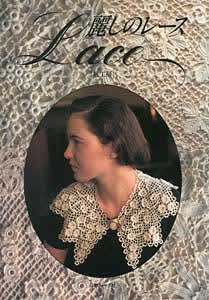
|
|
| page 1 | selected information |
|
kazekobo |
 |
|
Kazekobo |
||
 |
|||||
|
'Kazekobo', meaning 'wind studio', is the trading name of the Knit Designer, Yoko Hatta. Kazekobo is one of the most popular and well-established handicraft knitting designers in Japan, in a career stretching out over thirty years. Her work is published regularly, either through her one-person books or, alongside other designers, in knitting books and magazines. It is quite normal in Japan for designers to be employed to produce regular collections of hand knitting patterns for publication, either in one of the handicraft knitting magazines, such as those produced by Nihon Vogue, or in the magazines produced by yarn companies eager to show off the potential of their yarns. |
|||||
|
Her designs cover a wide area of styles and techniques, ranging from the classic to the ultra modern and may consist of anything from knitwear to knitted accessories. She works with a huge variety of techniques - hand knitting, machine knitting, crochet, needlework, or whatever she feels is appropriate. Although one might have expected that such a wide-ranging approach to technique would have resulted in vagueness about what makes up the 'Kazekobo style', this is not really the case. Her work is commercial, it's true, but one thing that runs through it is an ability to transform quite simple designs with subtle hints of contemporary detailing, as well as, by contrast, making rather complex designs appear disarmingly simple. Her technical virtuosity gives her work a quiet and deft sense of chic, but she is also not at all afraid, when the occasion demands it, to use bold colours in pursuit of a raucous street style. |
 |
||||
|
In addition to designing, Kazekobo appears regularly on the N.H.K educational television channel, in a program about clothes and dressing up called 'Osharekobo'. She also gives lectures, teaches and writes articles for knitting magazines on a range of subjects related to knitting and lace making. Her career isn't limited to the handicraft market and she has produced many knitwear designs for mass-production. She once spent time working in Peru on a project that produced hand made knitwear. She travels regularly to the United States, Europe, and Asia and speaks English well in addition to a little French. Her personal interests cover a wide area from Fine Art to Fashion and this has always been reflected in her rather individualistic personal appearance, which invariably captures the latest urban trend. Because she herself attaches so much importance to the 'wearing' of clothes - especially in cities - this factor lies at the core of her design. |
|||||
 |
Yoko Hatta trained as a designer of stage sets at Art College. She explains her preoccupation with style by saying: 'Art students in my day didn't just compete with each other in our work but we also liked to express ourselves through our bodies and clothes. We all tried to create the wackiest outfits and accessories by making them ourselves, finding materials wherever we could and using our making skills to put them together'. This was how she began to knit and learn dressmaking. Her knitting, since then, is entirely self-taught, learnt the hard way, job by job in the world of tight deadlines and production schedules. After leaving art college, Yoko became part of a trend in Japan known as the 'Mansion Makers'. This was the collective term for a fashion design movement in Tokyo during the 1960's and early 1970's where young designers set up their own small designer brands, supplying boutiques and shops or selling from their own studios. |
||||
|
An important step in her took place when she became a member of a circle run by knitting designer, Eiko Tobinai. Tobinai helped the careers of many young knitting designers to progress further by giving them the opportunity to work with publishers and yarn companies, and this was the factor that brought Kazekobo to the attention of a wider audience. It wasn't long before she became established among the most popular handicraft knit designers in Japan. |
|||||
|
'Kazekobo no Stylish Knit', Autumn-Winter
2001 'Uruwashi no Lace' photos by kind permission of Nihon Vogue
& Hamanaka Co. Ltd |
|||||